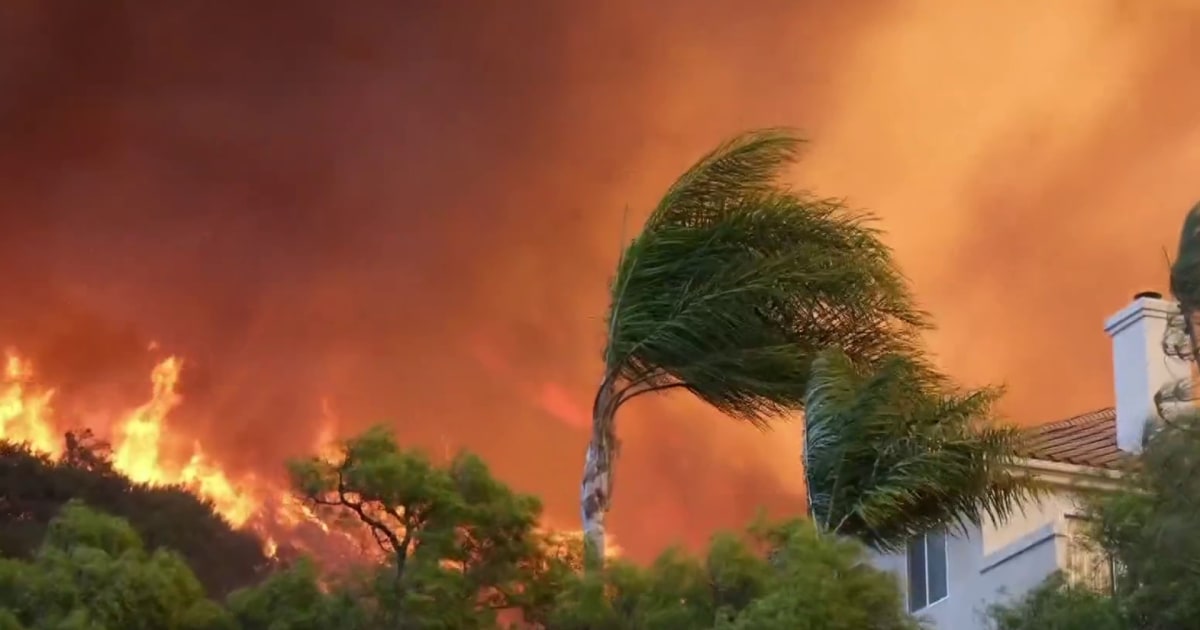Wildfires Rage in LA Area: Thousands Forced to Evacuate Amidst Fierce Winds
As the sun sets over Los Angeles, a thick veil of smoke blots out the horizon, signaling the latest environmental crisis to threaten this vibrant city. Wildfires rage in the LA area, exacerbated by fierce winds that have transformed small flames into roaring infernos. Thousands of residents have been forced to evacuate their homes, leaving behind not only their belongings but also a sense of security. This situation underscores the growing urgency for effective wildfire management and community preparedness in the face of climate change.
The Current Situation: Evacuations and Emergency Response
Authorities have declared states of emergency across several counties in Southern California as wildfires continue to spread. The winds, gusting up to 60 miles per hour, have created a perfect storm for fire outbreaks, causing rapid fire growth and unpredictable behavior. Firefighters are battling multiple blazes across the region, including the notable Silverado Fire and the Blue Ridge Fire. Both fires have prompted evacuation orders for nearby communities, with thousands of residents fleeing to safety.
In response to the growing threat, local fire departments have mobilized additional resources, including air support, to combat the flames from above. Fire crews are working tirelessly, often under extreme conditions, to protect homes and critical infrastructure. Despite their efforts, the unpredictable nature of the fires and the challenging weather conditions present significant hurdles.
Impact on Communities and Residents
The wildfires have not only endangered lives but have also inflicted emotional and psychological distress on the affected communities. Many residents are grappling with uncertainty as they evacuate, unsure of whether they will return to their homes or if they will find them reduced to ashes.
- Displacement: Thousands of families have been forced into evacuation centers or to stay with friends and relatives, creating a ripple effect of disruption.
- Economic Strain: Local businesses are suffering due to the evacuations, with many forced to close temporarily, impacting the local economy.
- Environmental Concerns: The wildfires contribute to air quality deterioration, raising health concerns for residents, particularly those with respiratory issues.
As the fires rage, community support systems are vital. Local organizations and volunteers are stepping up to provide shelter, food, and assistance to those impacted. The resilience of the Los Angeles community is on full display as residents come together to support one another during this challenging time.
Preparedness and Prevention: Lessons Learned
The frequency and intensity of wildfires in California have prompted discussions about preparedness and prevention. As climate change continues to alter weather patterns, wildfires are expected to become more common. Therefore, it’s crucial for residents to be proactive in their safety measures. Here are some key steps that can be taken:
- Creating a Wildfire Action Plan: Residents should have a clear plan that includes evacuation routes, communication strategies, and emergency contacts.
- Defensible Space: Maintaining a defensible space around homes by clearing flammable vegetation and debris can significantly reduce fire risks.
- Community Engagement: Participating in local fire preparedness programs and community drills can enhance overall safety and readiness.
Moreover, local and state officials are urged to invest in better infrastructure, such as firebreaks and controlled burns, to help manage the threat of wildfires. Effective land management practices could mitigate the severity of future blazes.
The Role of Technology in Wildfire Management
In recent years, technology has played a pivotal role in wildfire detection and management. Innovations such as satellite imagery, drones, and advanced modeling systems allow for quicker responses to emerging fires. These tools can provide real-time data on fire spread and intensity, enabling firefighters to strategize their efforts more effectively.
Additionally, public awareness campaigns utilizing social media and mobile applications keep residents informed about wildfire risks and evacuation orders. This use of technology not only enhances safety but also fosters a sense of community vigilance.
Looking Ahead: Hope Amidst the Crisis
While the wildfires in the LA area present an immediate threat, there is hope on the horizon. As firefighters continue their battle against the flames and community members support each other, a spirit of resilience shines through. The lessons learned from this crisis can pave the way for stronger preparedness measures and community engagement in the future.
Authorities are working diligently to contain the fires, and as weather conditions are expected to shift, hopes are high for improved firefighting conditions. With the commitment of local agencies and the unwavering spirit of the community, there is potential for recovery and rebuilding once the flames subside.
Conclusion: A Call to Action
As wildfires rage in the LA area and thousands are forced to evacuate amidst fierce winds, it’s a stark reminder of the environmental challenges we face. It calls for collective action—not just in firefighting efforts but in preparing for future incidents. By fostering a culture of preparedness, investing in technology, and supporting one another, communities can become more resilient against the inevitable wildfires that threaten their homes.
In the face of adversity, the human spirit shines brightest. Together, we can overcome these challenges and create a safer, more prepared community for all.
See more Update My News



